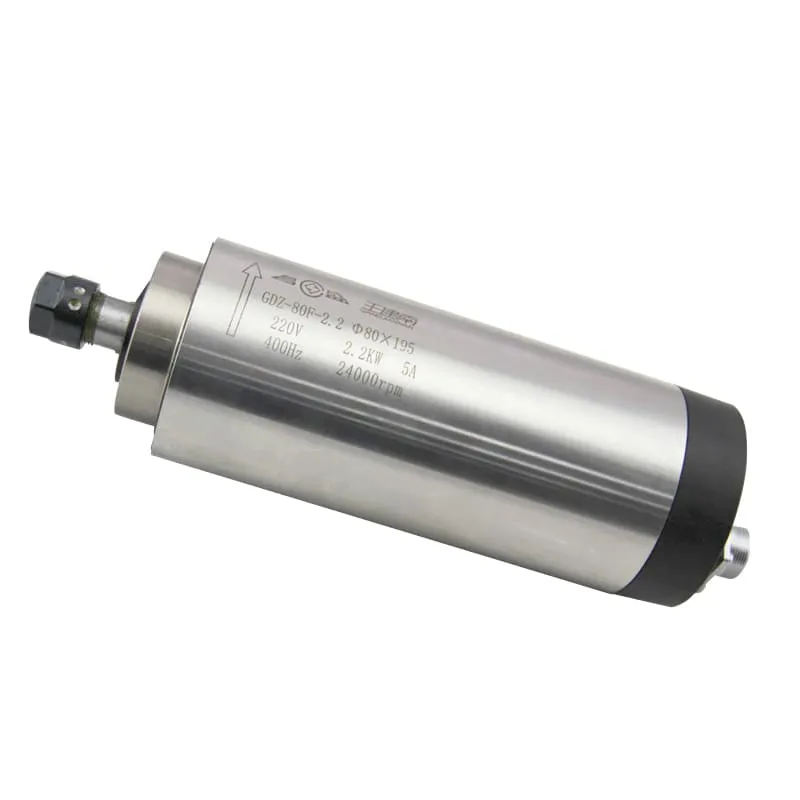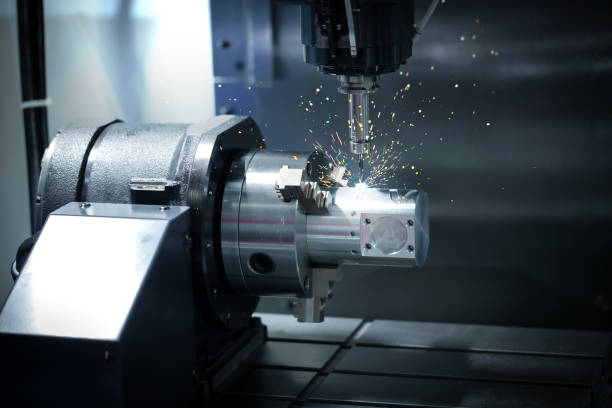How CNC Milling Machines Work
CNC milling machines are at the heart of modern manufacturing, revolutionizing the way we create complex parts with precision and efficiency. These sophisticated tools have transformed industries ranging from aerospace to medical device production. In this comprehensive guide, we’ll explore the intricate workings of CNC milling machines, their components, and the processes that make them indispensable in today’s manufacturing landscape.
The Basics of CNC Milling
CNC milling is a subtractive manufacturing process that uses computer-controlled cutting tools to remove material from a workpiece. The term “CNC” stands for Computer Numerical Control, which refers to the automated control of machining tools using pre-programmed software.
At its core, a CNC milling machine consists of several key components:
- The machine base and frame
- Cutting tools
- Spindle
- Work holding devices
- Axis drives and motors
- Control system
These elements work in harmony to create precise, complex parts from various materials such as metals, plastics, and composites.
The Heart of the Machine: The CNC Spindle
The spindle is arguably the most critical component of a CNC milling machine. It’s responsible for holding and rotating the cutting tool at high speeds, allowing for efficient material removal.

Modern CNC spindles, like the 2.2KW ER16 Air-Cooled Spindle, are designed for high-performance machining. These spindles can achieve speeds up to 24,000 RPM, enabling fast and precise cutting operations.
The Cutting Process: From Digital to Physical
The CNC milling process begins with a digital 3D model of the desired part. This model is then translated into a series of instructions, known as G-code, which the CNC machine can understand and execute.
- Design: Engineers create a 3D model using CAD (Computer-Aided Design) software.
- CAM: The model is processed through CAM (Computer-Aided Manufacturing) software to generate toolpaths.
- G-code Generation: The toolpaths are converted into G-code instructions.
- Machine Setup: The workpiece is secured, and tools are loaded into the machine.
- Execution: The CNC controller reads the G-code and directs the machine’s movements.
- Cutting: The spindle rotates the cutting tool, removing material as it moves along the programmed path.
Types of CNC Milling Machines
CNC milling machines come in various configurations, each suited for different applications:
- Vertical Milling Machines: The spindle axis is vertically oriented, ideal for face milling and drilling operations.
- Horizontal Milling Machines: The spindle is horizontal, suitable for heavy-duty cutting and long workpieces.
- 5-Axis Milling Machines: These machines can move the tool or workpiece in five different axes, allowing for complex geometries.
For instance, a 4.5KW ER32 Air-Cooled Spindle might be used in a high-performance vertical milling machine for aerospace applications.
The Role of Cutting Tools in CNC Milling
Cutting tools are the workhorses of CNC milling machines. They come in various shapes and sizes, each designed for specific operations:
- End mills
- Face mills
- Drill bits
- Reamers
- Taps
The choice of cutting tool depends on factors such as:
- Material being machined
- Desired surface finish
- Cutting speed and feed rate
- Depth of cut
Precision and Accuracy in CNC Milling
CNC milling machines are renowned for their ability to produce parts with extremely tight tolerances. This precision is achieved through:
- Rigid Machine Construction: Minimizes vibration and flexing during cutting.
- High-Quality Spindles: Ensure consistent rotational accuracy.
- Advanced Control Systems: Provide real-time adjustments and compensation.
- Thermal Management: Systems like the 24000RPM 3KW ER20 Water-Cooling Spindle help maintain dimensional stability during long machining cycles.
The Importance of Proper Workholding
Secure workholding is crucial for achieving precise results in CNC milling. Common workholding devices include:
- Vises
- Clamps
- Fixtures
- Vacuum tables
Proper workholding ensures that the part remains stable during machining, preventing vibration and maintaining accuracy.
Advanced Features of Modern CNC Milling Machines
Today’s CNC milling machines incorporate advanced features that enhance productivity and quality:
- Automatic Tool Changers: Allow for uninterrupted machining of complex parts.
- Probing Systems: Enable in-process measurement and quality control.
- High-Speed Machining: Utilizes specialized toolpaths and high-speed spindles like the 60000RPM 300W ER8 Water-Cooled Spindle for efficient material removal.
- Adaptive Control: Adjusts cutting parameters in real-time based on sensor feedback.
The Evolution of CNC Control Systems
CNC control systems have come a long way since their inception. Modern controllers offer:
- User-friendly interfaces
- Advanced simulation capabilities
- Network connectivity for remote monitoring and programming
- Integration with CAD/CAM systems
These features make CNC milling machines more accessible and efficient than ever before.
Applications of CNC Milling in Various Industries
CNC milling machines find applications across a wide range of industries:
- Aerospace: Producing lightweight, complex components for aircraft and spacecraft.
- Automotive: Manufacturing engine parts, molds for body panels, and custom components.
- Medical: Creating implants, surgical instruments, and prosthetics.
- Mold and Die: Producing molds for injection molding and stamping dies.
- Electronics: Machining enclosures and heat sinks for electronic devices.
Challenges in CNC Milling
While CNC milling is a highly capable process, it does come with challenges:
- Tool Wear: Cutting tools degrade over time, affecting part quality.
- Heat Generation: Excessive heat can cause thermal expansion and reduce accuracy.
- Chip Management: Proper chip evacuation is crucial for consistent cutting performance.
- Programming Complexity: Creating efficient toolpaths for complex parts can be challenging.
Maintenance and Optimization of CNC Milling Machines
Regular maintenance is essential for keeping CNC milling machines in top condition:
- Lubrication: Ensuring all moving parts are properly lubricated.
- Alignment Checks: Verifying machine geometry and axis alignment.
- Spindle Maintenance: Regular inspection and servicing of spindles, such as the 24000RPM 7.5KW ER32/40 Water-Cooling Spindle.
- Calibration: Periodic calibration of axes and probing systems.
Optimizing CNC milling operations involves:
- Fine-tuning cutting parameters
- Implementing efficient toolpaths
- Utilizing appropriate cutting tools and workholding methods
The Future of CNC Milling
The future of CNC milling looks bright, with several emerging trends:
- AI and Machine Learning: Enhancing process optimization and predictive maintenance.
- Additive-Subtractive Hybrid Machines: Combining 3D printing with CNC milling for enhanced flexibility.
- Sustainable Manufacturing: Developing more energy-efficient machines and processes.
- Internet of Things (IoT) Integration: Enabling better connectivity and data-driven decision making.
Environmental Considerations in CNC Milling
As sustainability becomes increasingly important, CNC milling operations are evolving to reduce their environmental impact:
- Coolant Recycling: Implementing systems to filter and reuse cutting fluids.
- Energy-Efficient Machines: Utilizing power-saving features and regenerative drives.
- Waste Reduction: Optimizing toolpaths to minimize material waste.
- Eco-Friendly Cutting Fluids: Adopting biodegradable and less toxic coolants.
Training and Skills for CNC Milling Operators
Operating CNC milling machines requires a unique set of skills:
- Understanding of G-code programming
- Knowledge of cutting tools and materials
- Familiarity with CAD/CAM software
- Problem-solving abilities for troubleshooting
Ongoing training and education are crucial for keeping up with advancements in CNC technology.
FAQs
1. What is the difference between CNC milling and traditional milling?
CNC milling is computer-controlled, allowing for more complex and precise parts to be machined with minimal human intervention. Traditional milling relies on manual control and is typically less accurate and more time-consuming.
2. How fast can CNC milling machines operate?
Cutting speeds in CNC milling can vary widely depending on the material, tool, and machine capabilities. Modern high-speed machining centers can achieve spindle speeds up to 60,000 RPM and feed rates of several hundred inches per minute.
3. What materials can be machined using CNC milling?
CNC milling can process a wide range of materials, including metals (steel, aluminum, titanium), plastics, composites, wood, and even some ceramics. The choice of cutting tools and parameters must be tailored to the specific material.
4. How accurate are CNC milling machines?
High-end CNC milling machines can achieve tolerances as tight as ±0.0001 inches (2.54 micrometers). However, typical tolerances for most applications range from ±0.001 to ±0.005 inches.
5. Can CNC milling machines work unattended?
Many modern CNC milling machines are designed for lights-out or unattended operation. With proper setup, tool management systems, and monitoring capabilities, they can run for extended periods without direct human supervision.
6. How does 5-axis CNC milling differ from 3-axis milling?
5-axis CNC milling allows the cutting tool or workpiece to move in five different axes simultaneously, enabling the creation of complex, contoured surfaces and undercuts in a single setup. 3-axis milling is limited to movement in the X, Y, and Z axes, often requiring multiple setups for complex parts.
Conclusion
CNC milling machines have revolutionized manufacturing, enabling the production of complex, high-precision parts with efficiency and repeatability. From the critical role of the spindle to the intricacies of toolpath generation, understanding how these machines work is essential for anyone involved in modern manufacturing.
As technology continues to advance, CNC milling machines will undoubtedly evolve, incorporating new features and capabilities that push the boundaries of what’s possible in machining. By staying informed about these developments and continuously honing their skills, manufacturers can leverage the full potential of CNC milling to create innovative products and drive industrial progress.
Whether you’re a seasoned machinist or a curious engineer, the world of CNC milling offers endless opportunities for learning and innovation. As we look to the future, it’s clear that these remarkable machines will continue to play a pivotal role in shaping the manufactured world around us.

